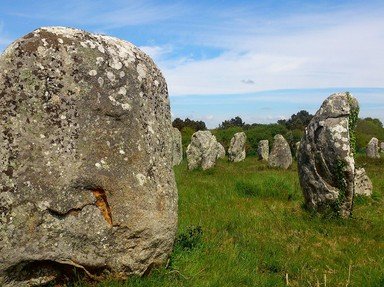Quiz Answer Key and Fun Facts
1. What development made the Neolithic Revolution such an important time in history?
2. Historians normally cite one of the positive outcomes of the Neolithic Revolution as:
3. On the other hand, how did the work load change? Not counting "travel time" approximately how long is it estimated that people had to "work" before the Neolithic Revolution?
4. How did the Neolithic Revolution affect man's nutritional intake?
5. How did nutritional intake during the Neolithic Revolution affect body structure?
6. It is true that population grew during the Neolithic Revolution. What was the major factor that caused this to happen?
7. During the Neolithic Revolution animals were domesticated on a larger scale. In what respect did the domestication of animals prove to be a disadvantage?
8. After studying the social structure of modern groups that still live as hunters and gatherers, anthropologists believe that the Neolithic Revolution might have led to the "specialization of cooperating individuals who perform specific tasks and roles". This is called a:
9. One of the consequences of the Neolithic Revolution was the emergence of personal and real estate ownership.
10. The first evidence of the consequences set in motion by the Neolithic Revolution is visible in the history of what area?
Source: Author
ponycargirl
This quiz was reviewed by FunTrivia editor
bloomsby before going online.
Any errors found in FunTrivia content are routinely corrected through our feedback system.

